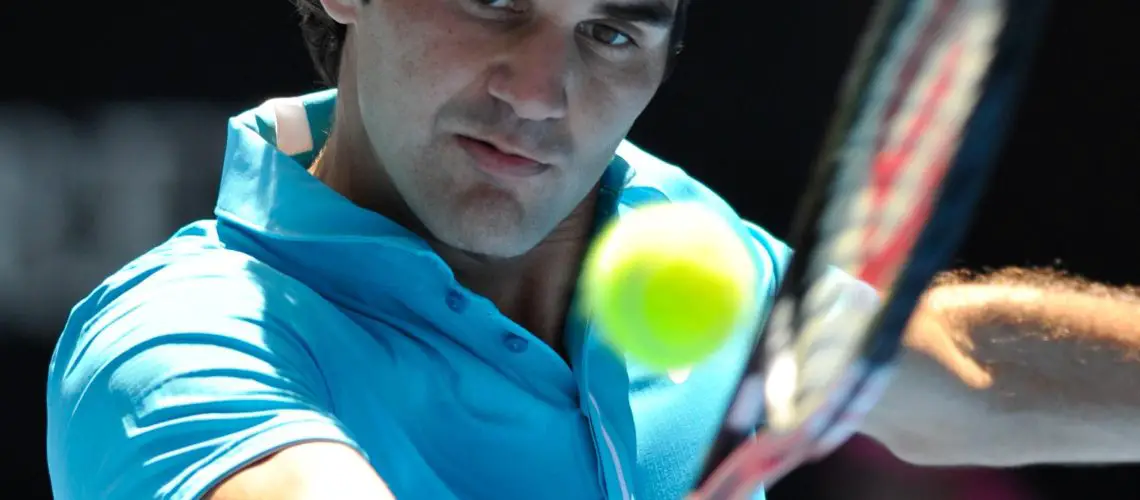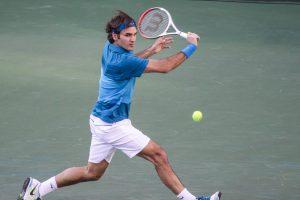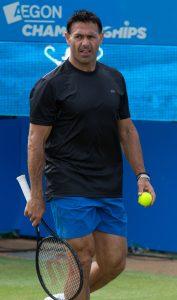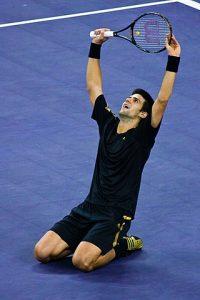We may earn money or products from the companies mentioned in this post.
Introduction

Tennis, a sport loved by millions around the world, is played on various court surfaces Each surface has its own unique characteristics that can greatly impact the gameplay and strategies employed by players The three main types of tennis court surfaces are grass courts, clay courts, and hard courts
Grass Courts
Grass courts are often associated with tradition and elegance, reminiscent of the iconic Wimbledon Championships The lush green surface provides a fast-paced game with low bounces, making it ideal for aggressive serve-and-volley players The unpredictability of the ball’s bounce on grass requires quick reflexes and adaptability from players
Clay Courts
Clay courts offer a completely different experience compared to grass courts The distinctive reddish surface slows down the ball and produces higher bounces This allows for longer rallies and strategic play, as players need to rely on patience and consistency rather than brute force Clay court specialists excel in sliding and maneuvering across the surface to retrieve difficult shots
Hard Courts
The most common type of tennis court found worldwide is the hard court Composed of asphalt or concrete covered with an acrylic layer, hard courts provide a medium-paced game with predictable bounces They offer a balance between grass and clay courts, catering to a variety of playing styles Hard courts favor aggressive baseline play due to their consistent bounce
Importance of Understanding Hard Tennis Court Composition

Gaining an understanding of the composition of hard tennis courts is essential for both players and those responsible for maintenance
Impact on Gameplay and Strategy
The material used in constructing hard tennis courts can influence important aspects of gameplay such as ball speed, bounce height, grip levels, and player movement The composition of the hard court can affect how players plan their shots, adjust their footwork, and strategize during matches A thorough understanding of these factors allows players to optimize their performance and exploit the court’s characteristics to gain an advantage
Maintenance and Durability Considerations
Knowing the composition of hard tennis courts is crucial for maintenance personnel responsible for ensuring that the playing surface remains in optimal condition Different materials used in hard courts require specific care to prevent cracking, fading, or excessive wear Understanding the composition enables effective maintenance practices such as regular cleaning, resurfacing, and addressing any potential issues before they become major problems
Composition and Materials Used in Hard Tennis Courts

When it comes to constructing hard tennis courts, several layers of materials are carefully chosen to ensure durability, stability, and optimal playing conditions Let’s dive into the various components that make up these high-performance surfaces
Subbase Layer
The subbase layer acts as the foundation for the entire tennis court It typically consists of crushed stone or asphalt, providing stability and efficient drainage By using crushed stone or asphalt, a solid base is created that can withstand heavy foot traffic and extreme weather conditions To guarantee an even playing surface, proper grading techniques are employed during construction
Base Layer
Sitting atop the subbase layer is the base layer, which serves as the main foundation for the tennis court surface The two most commonly used materials for this layer are asphalt and concrete Both options offer excellent strength and durability to support years of intense gameplay A well-constructed base layer is crucial for maintaining the longevity of the court
Cushioning Layer (Optional)
In some cases, a cushioning layer may be added between the base layer and topcoat for enhanced player comfort and injury prevention This additional layer consists of rubberized coatings that provide shock absorption when players move across the court’s surface The thickness of this cushioning layer can vary depending on desired levels of cushioning and impact reduction
Topcoat
The final layer of a hard tennis court is known as the topcoat or surface coating This is where aesthetics meet performance Typically composed of acrylic paint mixed with sand particles, it offers both traction and bounce consistency during play
a) Different Types of Sand
When mixing sand particles with the acrylic paint, various types of sand can be used Silica and aluminum oxide are two common options The choice of sand can impact the court’s performance characteristics, such as speed and grip
b) Sand Concentration Levels
The concentration levels of sand in the topcoat mixture also play a role in determining how the ball interacts with the surface Adjusting the sand concentration can affect both the speed at which the ball travels and its grip on the court, providing players with different playing experiences
By carefully selecting and layering these materials, hard tennis courts are built to withstand intense gameplay while providing optimal playing conditions for athletes Whether it’s a professional tournament or a friendly match among friends, these courts offer a solid foundation for an exhilarating game
Hard Court Variations: Acrylic vs Artificial Grass

When it comes to hard court surfaces, two popular options stand out: acrylic and artificial grass While they may appear vastly different, both are classified as “hard” courts due to their solid and durable nature Let’s explore the key differences between these two variations
Acrylic Hard Court Surfaces
Acrylic hard courts are known for their smooth and consistent playing surface They are made by applying multiple layers of acrylic resin on top of an asphalt or concrete base The result is a resilient and low-maintenance court that offers excellent ball bounce and player traction
One of the main advantages of acrylic hard courts is their versatility These surfaces can be customized with different textures, colors, and line markings to suit specific preferences or tournament requirements Additionally, acrylic courts offer good resistance to harsh weather conditions, making them suitable for both indoor and outdoor play
Artificial Grass Hard Courts
In contrast to traditional grass courts, artificial grass hard courts provide a unique playing experience that combines the durability of a hard court with the aesthetics of natural grass These surfaces consist of synthetic fibers filled with sand or rubber infill to mimic the look and feel of real grass
The advantage of artificial grass hard courts lies in their ability to offer enhanced shock absorption, reducing joint impact during intense gameplay This makes them particularly appealing for players who prioritize injury prevention Additionally, artificial grass surfaces require minimal maintenance compared to natural grass courts while still providing a visually pleasing environment
Classification as “Hard” Courts
You may wonder why both acrylic and artificial grass hard courts are categorized under the “hard” court classification despite using different materials The term “hard” refers more to the surface’s playability rather than the specific materials used
Hard courts, including acrylic and artificial grass variations, are generally characterized by their solid and unyielding playing surfaces This allows for a faster ball speed and a more predictable bounce compared to other court types like clay or grass The firmness of hard courts also benefits players who rely on power and aggressive shots
In conclusion, whether you prefer the smoothness of acrylic hard courts or the unique feel of artificial grass hard courts, both variations offer their own advantages It ultimately comes down to personal preferences in terms of playability, maintenance requirements, and aesthetic appeal So next time you step onto a hard court, remember that there’s more than meets the eye when it comes to these versatile surfaces
Key Factors Affecting the Performance of Hard Tennis Court Surfaces

Speed Variation Among Different Types of Hard Courts
When it comes to hard tennis court surfaces, one important aspect that greatly affects the game is the variation in speed among different types of courts There are several factors that can influence the speed, such as the type of court, its size, coating, and even color
For instance, a hard court with a rougher texture may slow down the ball compared to a smoother surface Similarly, larger courts tend to have a slower pace due to the increased distance players need to cover The coating applied on the court can also impact speed; some coatings provide more grip, leading to faster rallies
The color of the court can also play a role in determining its speed Darker colors tend to absorb more heat from sunlight and make the surface faster, while lighter colors reflect heat and result in slower gameplay
Effect on Players’ Style, Technique, and Physical Health
The speed variation among different hard court surfaces has a significant impact on players’ style of play, technique development, and physical health
Firstly, players need to adapt their footwork and movement based on the specific characteristics of each type of court they encounter A faster court requires quicker reactions and adjustments compared to a slower one where players have more time to prepare for shots
Additionally, playing on different hard courts can affect players’ technique development The variations in bounce height and ball speed demand adjustments in stroke production and timing for optimal performance
Furthermore, certain types of hard courts may increase the risk of injuries due to their particular characteristics For example, faster surfaces may put more strain on joints and muscles due to sudden stops or accelerations On the other hand, slower courts can be more forgiving in terms of impact on players’ bodies
In conclusion, understanding the key factors that affect the performance of hard tennis court surfaces is crucial for both players and court managers By considering speed variation and its impact on players’ style, technique, and physical health, one can make informed decisions regarding court selection and maintenance
Maintenance Tips for Long-Lasting Hard Tennis Courts

When it comes to maintaining hard tennis courts, regular cleaning is key to preserving their longevity Simple yet effective cleaning methods such as sweeping or pressure washing can go a long way in keeping the surface free from debris and dirt buildup By regularly removing leaves, grass clippings, and other loose particles, you can prevent them from accumulating and potentially damaging the court over time
Addressing Cracks with Proper Repair Techniques
Court cracks are not only unsightly but can also pose safety hazards for players It’s essential to address these cracks promptly using proper repair techniques Begin by thoroughly cleaning the crack using a wire brush or compressed air to remove any loose materials Then, apply an appropriate crack filler that matches the composition of your court surface This will help prevent further damage and ensure a smooth playing experience for years to come
Resurfacing Recommendations for Optimal Playing Conditions
To maintain optimal playing conditions on your hard tennis court, periodic resurfacing is necessary Over time, the court surface may become worn out due to constant usage and exposure to the elements Resurfacing involves applying a fresh layer of acrylic coating to restore the smoothness and texture of the court It not only enhances player performance but also extends the lifespan of the court by providing additional protection against wear and tear
Seasonal Care and Weather Considerations
The changing seasons bring different challenges for tennis court maintenance During winter months, it’s important to protect your hard court from freezing temperatures that can cause cracks or damage its foundation Applying a protective cover or using heaters can help mitigate these risks
In warmer climates, excessive heat can lead to fading or blistering of the court surface Regularly watering the court and installing shade structures can provide relief from scorching temperatures Additionally, be mindful of heavy rainfalls as they can cause erosion or flooding Ensuring proper drainage systems are in place will help prevent water damage to your tennis court
Conclusion:

Summary of the components and variations of hard tennis courts
In conclusion, hard tennis courts come in various compositions and designs, each with its own unique qualities These courts typically consist of a solid base layer, followed by an asphalt or concrete surface The top layer can be made of different materials such as acrylic or synthetic resin, providing players with varying levels of speed and bounce
The significance of understanding court composition for players, coaches, and facility managers
Understanding the composition of hard tennis courts is crucial for players, coaches, and facility managers alike Players need to familiarize themselves with the specific characteristics of the court they are playing on to adjust their game accordingly Coaches can use this knowledge to tailor training sessions to specific court types, helping their players develop strategies that take advantage of the court’s strengths and weaknesses Facility managers benefit from understanding court compositions as it allows them to maintain the surfaces properly and ensure optimal playability
Encouragement to explore different types of hard courts to find the best fit for individual preferences and needs
Finally, it is important for players at all levels to explore different types of hard courts in order to find the one that best suits their preferences and needs Some may prefer a faster surface that rewards aggressive play, while others may prefer a slower surface that allows for more control By trying out different court compositions, players can discover which type enhances their game and enjoyment on the court
By considering these factors – summarizing the components and variations of hard tennis courts, recognizing their significance for players and facility managers alike, and encouraging exploration – individuals can make informed decisions about choosing or maintaining hard tennis courts that suit their specific requirements
Remember: The key is not only providing valuable information but also doing so in an engaging manner, capturing the reader’s attention and keeping them interested throughout the article
Useful Links

Different Tennis Court Material Types | Las Vegas
The 11 Tennis Court Surfaces Explained
What are the Best Tennis Court Surfaces for Backyards?
Everything you need to know about tennis courts
4 Types of Surfaces Used for Tennis Court
Hard Court Tennis Construction
Tennis Court Surface: Pros And Cons Of The Different …
Types of Tennis Court Surfaces
What are the different types of Tennis & Pickleball court …
IAPA :: Tennis Courts
Sports Surfaces: Tennis Court Design & Construction – YouTube
4 types of surfaces you will see in Tennis
A Comparison of the Different Tennis Court Surfaces
Types of Tennis Court Surfaces | JK Meurer
Types of tennis courts and their influence on ball bounce & …
General Tennis Court Frequently Asked Questions
Types of Tennis Courts and the History Behind Them
What is the difference between clay, grass and concrete …
Har Tru Clay Courts






